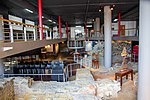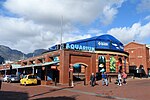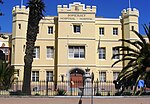Zeitz Museum of Contemporary Art Africa

Zeitz Museum of Contemporary Art Africa (Zeitz MOCAA) is a public non-profit museum in Cape Town, South Africa. Zeitz MOCAA opened on September 22, 2017 as the largest museum of contemporary art from Africa and its diaspora. The museum is located in the Silo District at the Victoria & Alfred Waterfront in Cape Town. A retail and hospitality property, the Waterfront receives around 24 million local and international visitors per year.The museum’s galleries feature temporary exhibitions and a permanent collection. The institution also includes the Centre for Art Education, a Fellowship program, Atelier artist residency, a retail shop, rooftop restaurant and a coffee shop.
Excerpt from the Wikipedia article Zeitz Museum of Contemporary Art Africa (License: CC BY-SA 3.0, Authors, Images).Zeitz Museum of Contemporary Art Africa
East Quay Road, Cape Town Foreshore
Geographical coordinates (GPS) Address Phone number Website External links Nearby Places Show on map
Geographical coordinates (GPS)
| Latitude | Longitude |
|---|---|
| N -33.9084 ° | E 18.423 ° |
Address
Zeitz Museum of Contemporary Art Africa (MOCAA)
East Quay Road
8001 Cape Town, Foreshore
Western Cape, South Africa
Open on Google Maps









